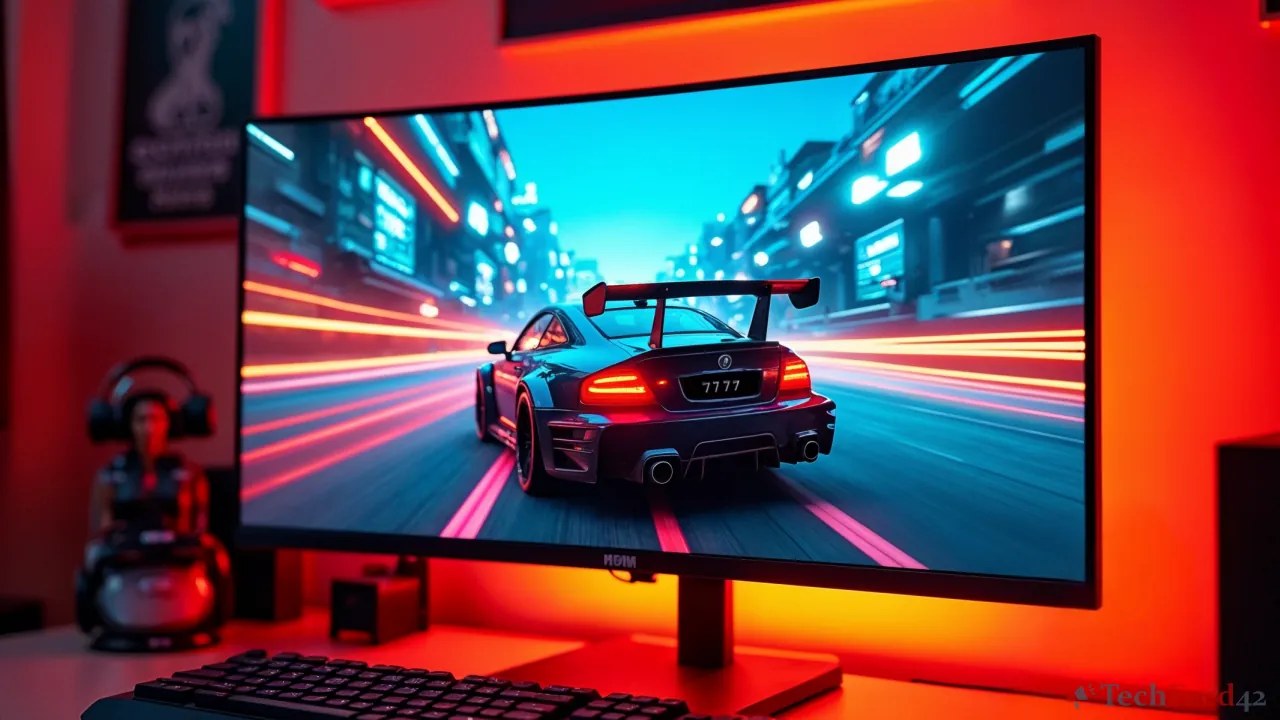As a gamer, choosing the right monitor can have a big impact on your gaming experience. One of the most popular options for gamers today is a 144Hz monitor. If you’re wondering whether upgrading to a 144Hz monitor is worth it, this article will explain why it might be the perfect choice for your gaming setup.
What is a 144Hz Monitor?
A 144Hz monitor is one that refreshes the display 144 times per second. The “Hz” stands for hertz, which is the unit used to measure refresh rates. The higher the refresh rate, the more times the image on your screen is updated every second. A standard monitor usually has a 60Hz refresh rate, while a 144Hz monitor provides more than double the refresh rate of a typical display. This can make a noticeable difference, especially in fast-paced games.

Benefits of a 144Hz Monitor for Gamers
Smoother Gameplay
One of the biggest advantages of a 144Hz monitor is smoother gameplay. In games where fast reactions are crucial, such as first-person shooters or racing games, a 144Hz monitor can make the movements on the screen feel more fluid. Since the screen refreshes more frequently, it eliminates the “choppy” or “stuttering” effect that sometimes occurs with a 60Hz monitor. This gives you a more enjoyable gaming experience and helps you stay more focused.
Reduced Motion Blur
Another significant benefit of a 144Hz monitor is reduced motion blur. Motion blur occurs when the refresh rate of the monitor is too slow to keep up with fast-moving objects on the screen. In competitive gaming, where every millisecond matters, motion blur can be a serious disadvantage. A 144Hz monitor reduces motion blur because it refreshes the image more often, making it easier to see and track fast-moving objects. This can help you perform better in games by giving you a clearer view of the action.

Increased Responsiveness
A 144Hz monitor can also make your games feel more responsive. With a higher refresh rate, your actions are reflected on the screen more quickly. This reduced input lag can give you a competitive edge in games that require quick reactions. For example, in a fast-paced shooter, being able to see and react to an opponent’s movements faster can make the difference between winning and losing. The increased responsiveness of a 144Hz monitor allows you to be more precise and quicker in your gameplay.
Is a 144Hz Monitor Worth It for All Gamers?
Casual Gamers vs. Competitive Gamers
While a 144Hz monitor can offer significant advantages, it may not be necessary for all gamers. If you’re a casual gamer who primarily plays slower-paced games like puzzle or strategy games, a 60Hz monitor might still be sufficient for your needs. However, if you’re a competitive gamer or play fast-paced games regularly, a 144Hz monitor can be a game-changer.
For esports players or those who take their gaming seriously, upgrading to a 144Hz monitor is almost essential. The smoother visuals, reduced motion blur, and increased responsiveness give you a distinct advantage over players using lower refresh rate monitors. Even if you’re not playing competitively, a 144Hz monitor can make your gaming experience more enjoyable overall.
Your Hardware Matters
Before upgrading to a 144Hz monitor, it’s important to consider your gaming hardware. To fully take advantage of a 144Hz refresh rate, your gaming PC needs to be powerful enough to produce a high frame rate (FPS) that matches the monitor’s refresh rate. If your PC is only capable of producing 60 FPS, you won’t see much improvement by upgrading to a 144Hz monitor. Make sure your graphics card and processor are up to the task of delivering high frame rates in your favorite games before investing in a 144Hz monitor.
Other Considerations When Choosing a 144Hz Monitor
Monitor Resolution
When looking for a 144Hz monitor, resolution is another factor to consider. Many 144Hz monitors come in various resolutions, including 1080p, 1440p, and even 4K. A 1080p 144Hz monitor may be ideal if you’re aiming for higher frame rates without taxing your hardware too much. On the other hand, a 1440p or 4K 144Hz monitor offers a sharper image, but you’ll need a more powerful gaming rig to maintain high frame rates.

Adaptive Sync Technology
Another feature to look out for when considering a 144Hz monitor is adaptive sync technology like G-Sync or FreeSync. These technologies help reduce screen tearing by syncing the monitor’s refresh rate with the game’s frame rate. Combining a 144Hz monitor with adaptive sync technology can further enhance the smoothness of your gameplay, providing an even better gaming experience.
Monitor Size and Panel Type
Monitor size and panel type also play a role in your overall gaming experience. A larger monitor can provide a more immersive experience, especially when paired with a 144Hz refresh rate. In terms of panel types, TN panels are often faster and cheaper, but IPS panels offer better color accuracy and wider viewing angles. VA panels provide a balance between the two, with good color reproduction and refresh rates.
Conclusion: Is a 144Hz Monitor Worth It?
In conclusion, a 144Hz monitor is definitely worth it for gamers who play fast-paced or competitive games. The smooth visuals, reduced motion blur, and increased responsiveness can greatly enhance your gaming experience and even give you an edge in competitive play. However, casual gamers or those who play slower-paced games may not need the extra refresh rate, and their money might be better spent on other upgrades.
If you have the hardware to support it and you’re serious about gaming, upgrading to a 144Hz monitor is a solid investment that can improve your performance and enjoyment.


